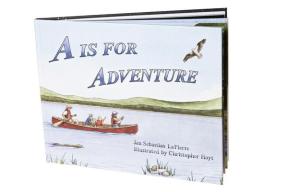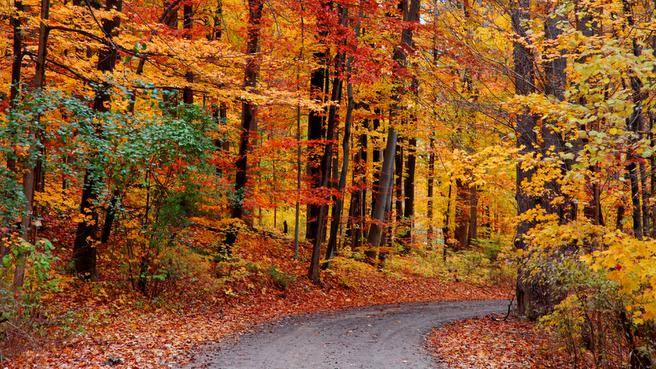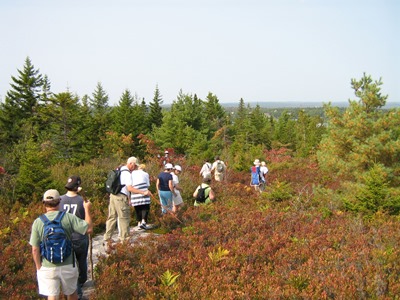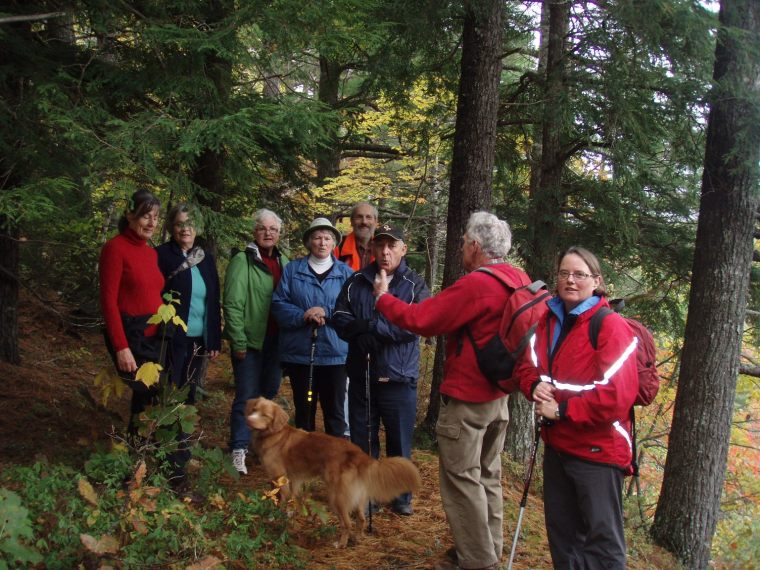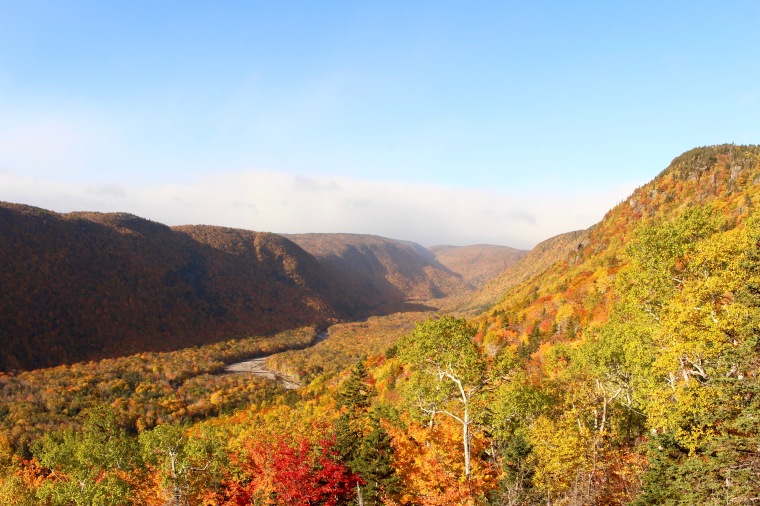This activity is taught in Hike NS’s Re-Connecting with Nature workshop offered each year in locations throughout the province. This is a one-day, hands-on workshop for adults held mostly outdoors to improve your ability to lead and share an appreciation and understanding of nature with children and youth. We plan to have a schedule available in late June for workshops hopefully scheduled in the fall, if possible.
Scratch and Sniff
Synopsis: Introduce the sense of smell with an aromatic natural item. Then demonstrate the process of scratching an item to release the scent while you put special potion on the object with a scent catcher sponge. The potion helps to catch the scent molecules in your nose. Participants then scratch and sniff across an area. At the end they pair up and share their favorite sniffs.
Props and Set-up: You need a potion bottle (neat reused bottle) with potion in it (water), a bowl to pour the potion into, plus a scent catcher (small piece of sponge) for each person. It is nice to have it in an open enough area for freedom of movement. Scout the area out so you know some of the neat smells that are there to share ahead of time.
Source: Adapted from Earthwalks by Kirk Hoessle & Steve Van Matre, Institute for Earth Education, 1980.
Activity
1. Introduce Challenge of Smell Sense: Note that you have the hardest sense challenge of them all… but you think they can handle it. It’s a skill that most humans do not use much anymore – the sense of smell. There are incredible smells out here, and some are easy… try this (let them smell a sprig of spruce or balsam fir). But most smells are tough to find, so I will share a couple of my tricks of the trade.
2. Introduce the Scratch: “Most natural scents are hidden just below the surface of whatever it is that has them – they’re just waiting to burst forth and be released to the world outside. We’re going to try to find some of these scents, and I know a special way to help us find them. It’s called scratch and sniff. Simply scratch the surface of a natural object with your fingernail, and let the scent burst out! Then you must sniff before the scent goes away.”
3. Introduce the Potion: “Now, some of these scents, even though they burst out, are difficult to capture long enough for us to sniff. And some of them are just too faint to detect. To help overcome these problems, we’ll use the aid of this special potion and a ‘scent catcher’. This bottle contains a very old and special potion that comes from a hidden stream. This stream flows from a spring deep in the earth, and it is the special waters of this stream that are perfectly suited for capturing scents”. Adjust the story and fill in details as you see fit.
4. Demonstrate Use of Scent Catchers: Pour some potion out of the bottle into the bowl…”These scent catchers can soak up the special solution and all you need to do is drip a bit on the object each time you go to scratch and sniff something. It will hold the scent long enough for you to get a whiff of it.” Demonstrate by scratching and sniffing several things and share the sniff.
5. Prove Potion’s Effectiveness: “I can see you don’t believe this really works. I can prove it. Here, smell this sprig of fir [quickly put it under someone’s nose]. It has some smell, right? Now I will scratch it [crinkle it up] and drop some potion on it. Now smell it. It is much stronger right? [Let others try it.] You see it really works!”
6. Define Area for Scratch and Sniff: “Now see what you can discover, scratch and sniff your way over to there, where you’ll meet me. You can scratch and sniff anything – plants, roots, soil, and even rocks. Along the way, remember your favorite scratch and sniff. Lots of great scratch and sniffs are along the ground too, so don’t be afraid to get down to look for them. If you find a good sniff, share it with someone else. Oh, one more thing before you get started. This is ‘scratch and sniff’ not ‘squash and sniff’. Be gentle with what you’re sniffing!”
7. Encourage and Model Scratching and Sniffing: Scratch and sniff yourself and point out things to the group members that give good sniffs. Encourage them to get down on their knees as there are a lot of neat sniffs near the ground.
8. Pair Up for Sharing Sniffs: When they all arrive at the defined ending spot, have them pair up with whomever has the same color scent catcher. They then retrace their routes with their new partners and share their favorite scratch and sniff.
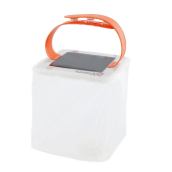
 Hiking Trails of Mainland Nova Scotia book by Michael Haynes
Hiking Trails of Mainland Nova Scotia book by Michael Haynes